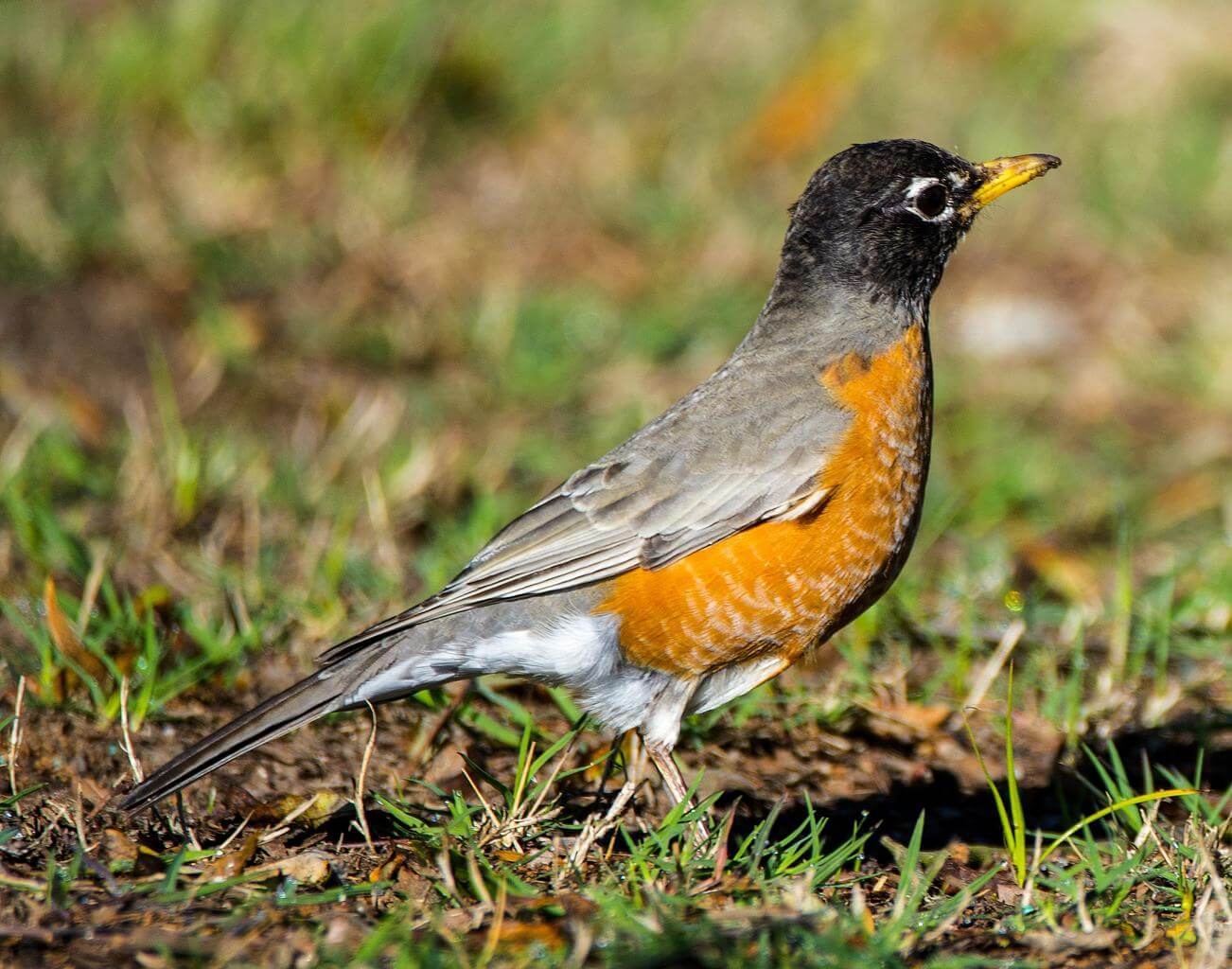American Robin
(Turdus migratorius)
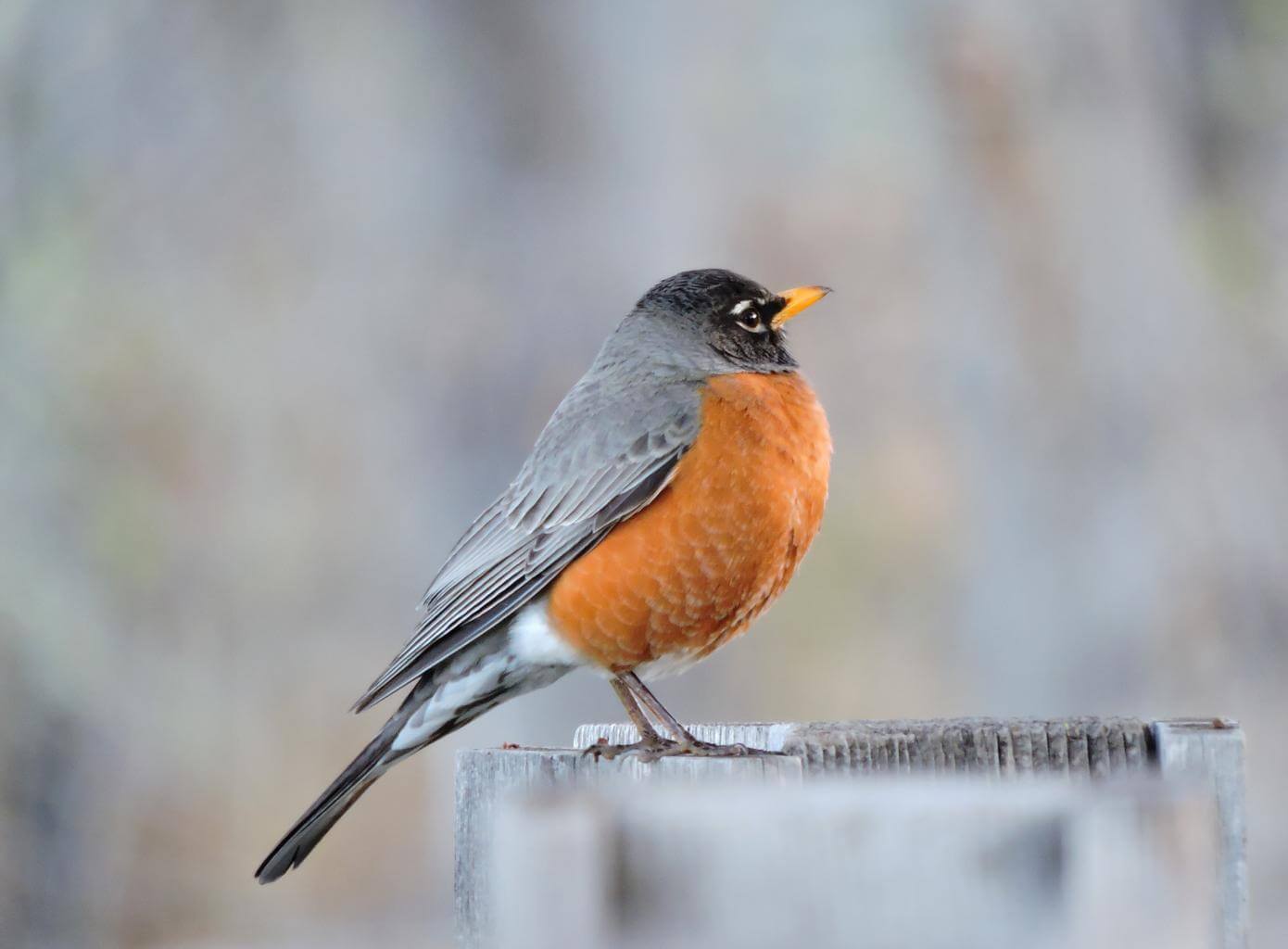
The American Robin is one of the most beloved and popular birds in North America. It's cheerful song, red breast, and tolerance of humans make it one of the earliest birds that children learn. It is considered a harbinger of spring, although in reality it often overwinters in its breeding range. Robins are often featured on holiday greeting cards, and because of their red breast, they are often known as "robin red-breast" or simply "red-breast".
Size: return to top
- Length: 9.0 inches
- Wingspan: 14.0 inches
- Weight: 2.85 oz.
How To Identify: return to top
Adult American Robins are somewhat chunky birds, with gray heads, backs, and tails, although the head is a bit darker than the rest. Their undersides are a red-like rufous color, hence the name “robin red-breast”. Their bills are mostly yellow, but sometimes you can see a bit of black at the tip. They also have an incomplete white eye-ring. Males and females have the same color pattern, but the intensity of color differs, with males having darker gray heads and backs and brighter rufous underparts. The two photos below illustrate the differences; however, not all females are as dull as the one below, and sometimes approach males in intensity of color.
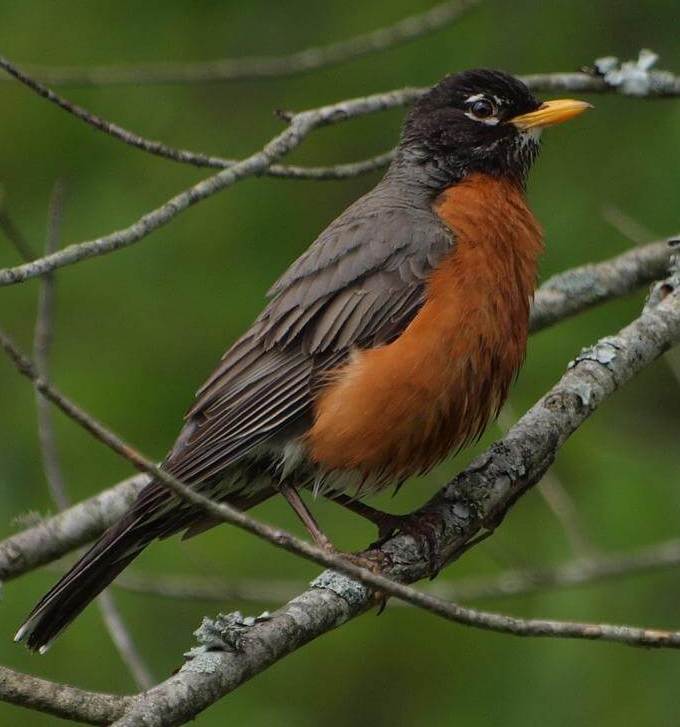 Male Male |
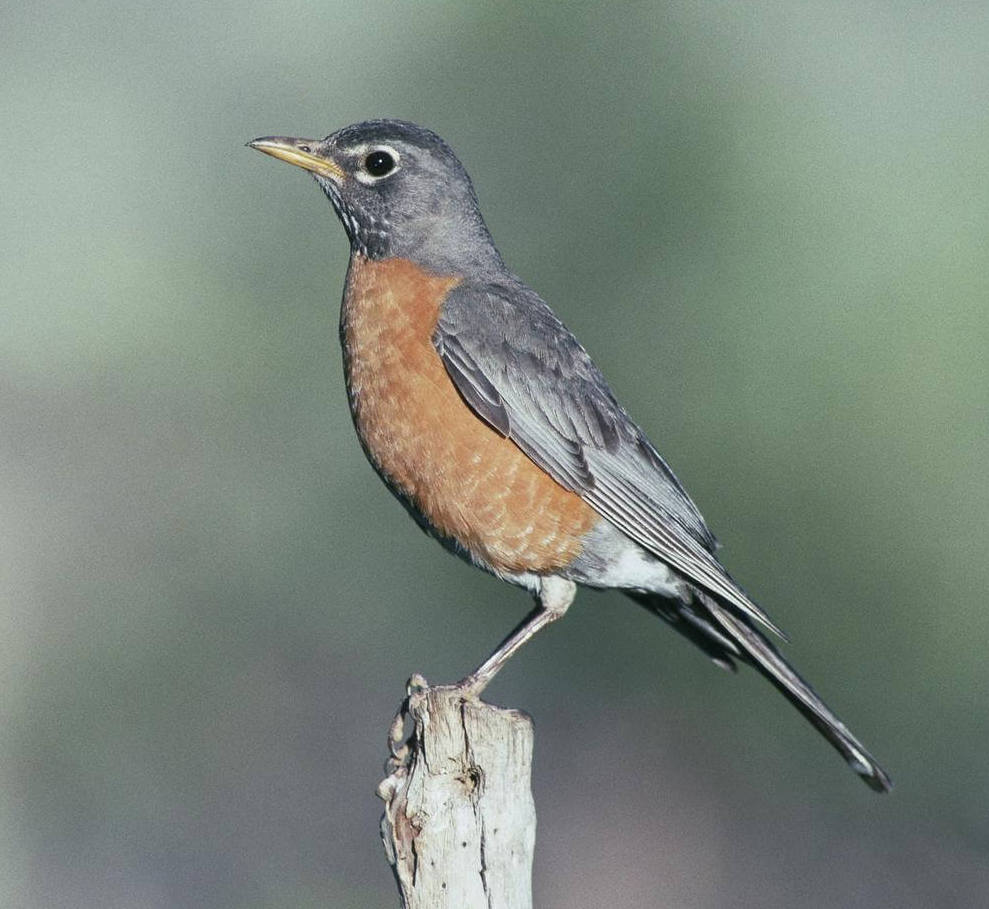 Female Female |
Young robins, just out of the nest have dark brown spots mixed in with the rusty red of the breast.
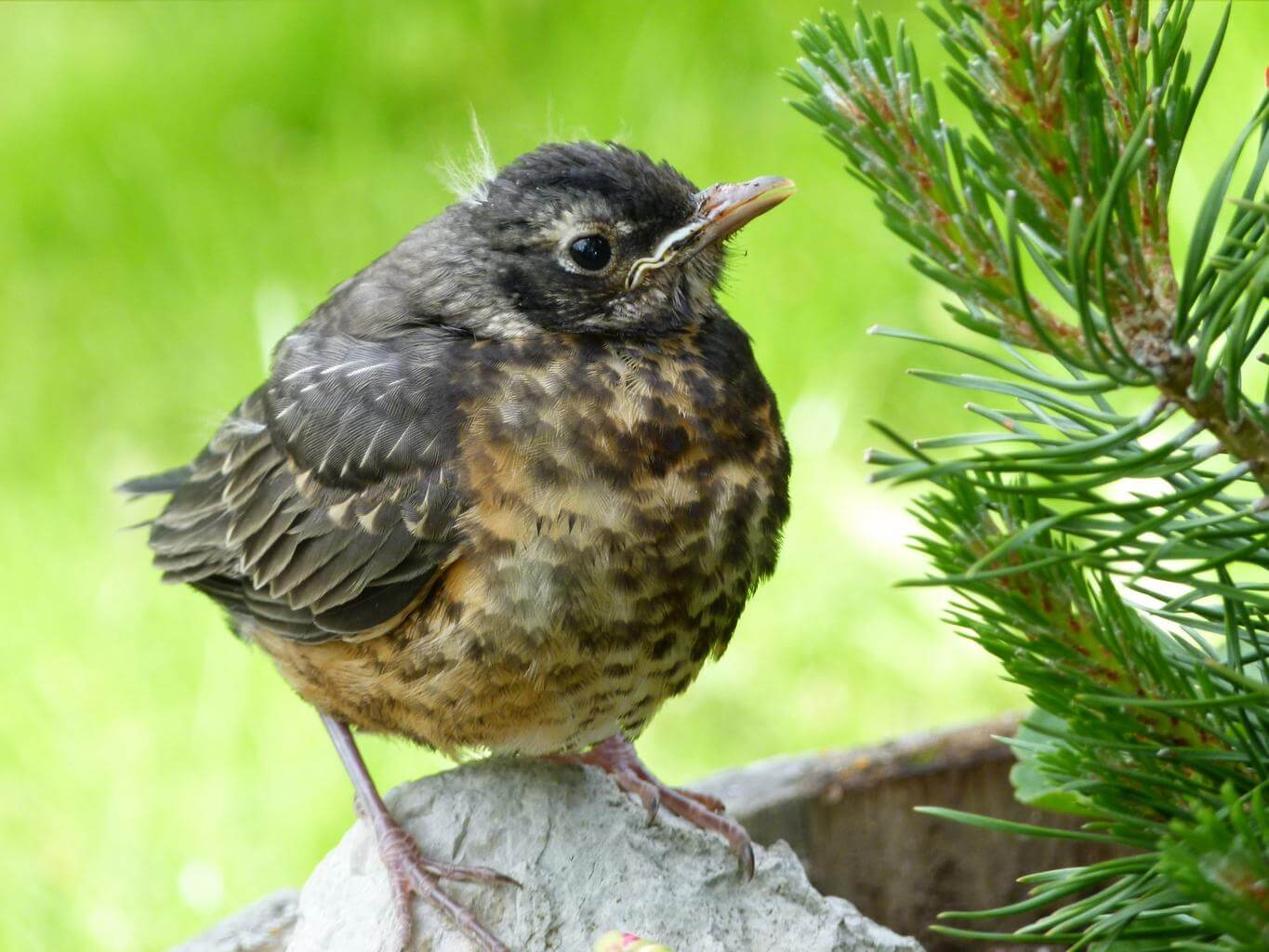
Range Map: return to top
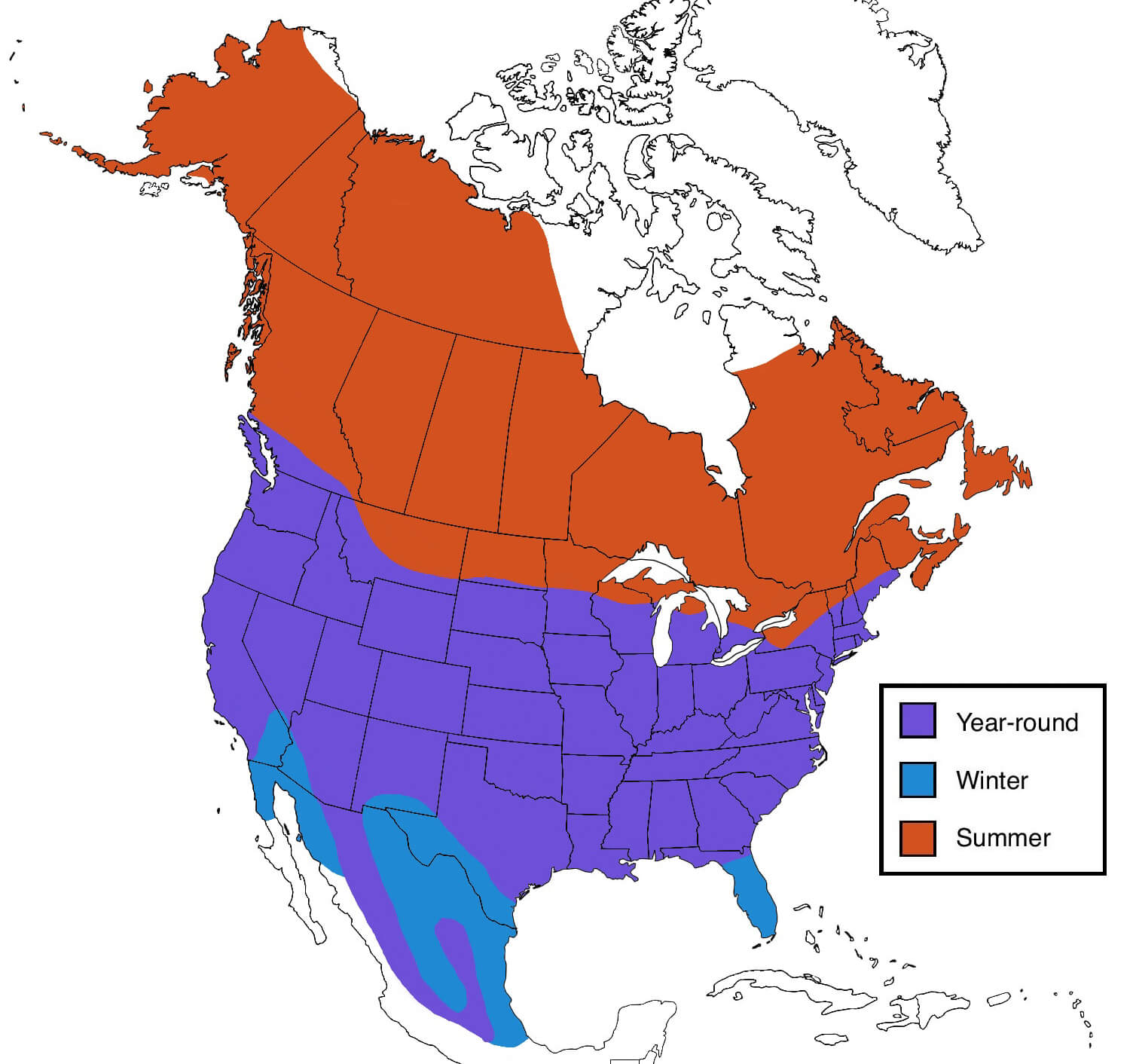
Similar Species: return to top
Varied Thrush
Both are thrushes, so their bills are similar in shape, but the Varied Thrush has a gray bill, as opposed to yellowish in the Robin. In the Varied Thrush, the red extends up through the throat, but it also has a dark gray band across the chest, which the Robin lacks. The head of the Robin is largely black, with a broken white eye-ring, while the Varied Thrush has a light gray crown, black ear patches, and light orangish band above the ear patch. Also, it lacks any white around the eye.
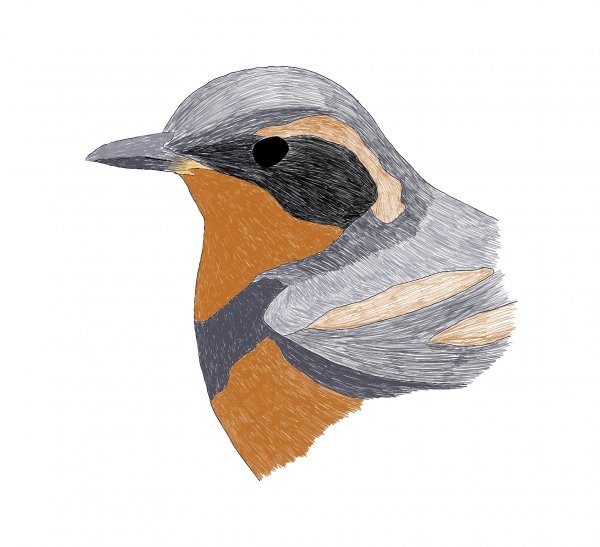 Varied Thrush Varied Thrush |
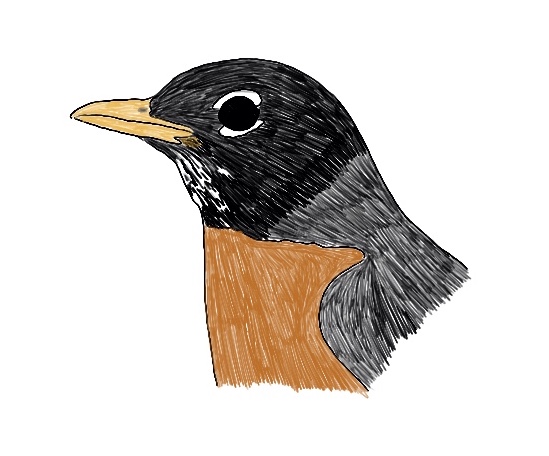 American Robin American Robin |
Eastern Towhee and Spotted Towhee
Both Towhees have a solid black head and throat, similar to the Robin, but have white underparts flanked by red, as shown below. Robins lack the white underparts. Also, the Towhees have a more conical bill as opposed to the longer, more generalized bill of the Robin. Neither Towhee has any white around the eye.
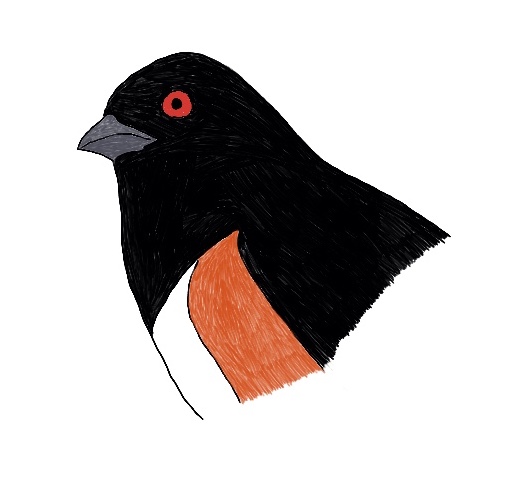 Eastern Towhee Eastern Towhee |
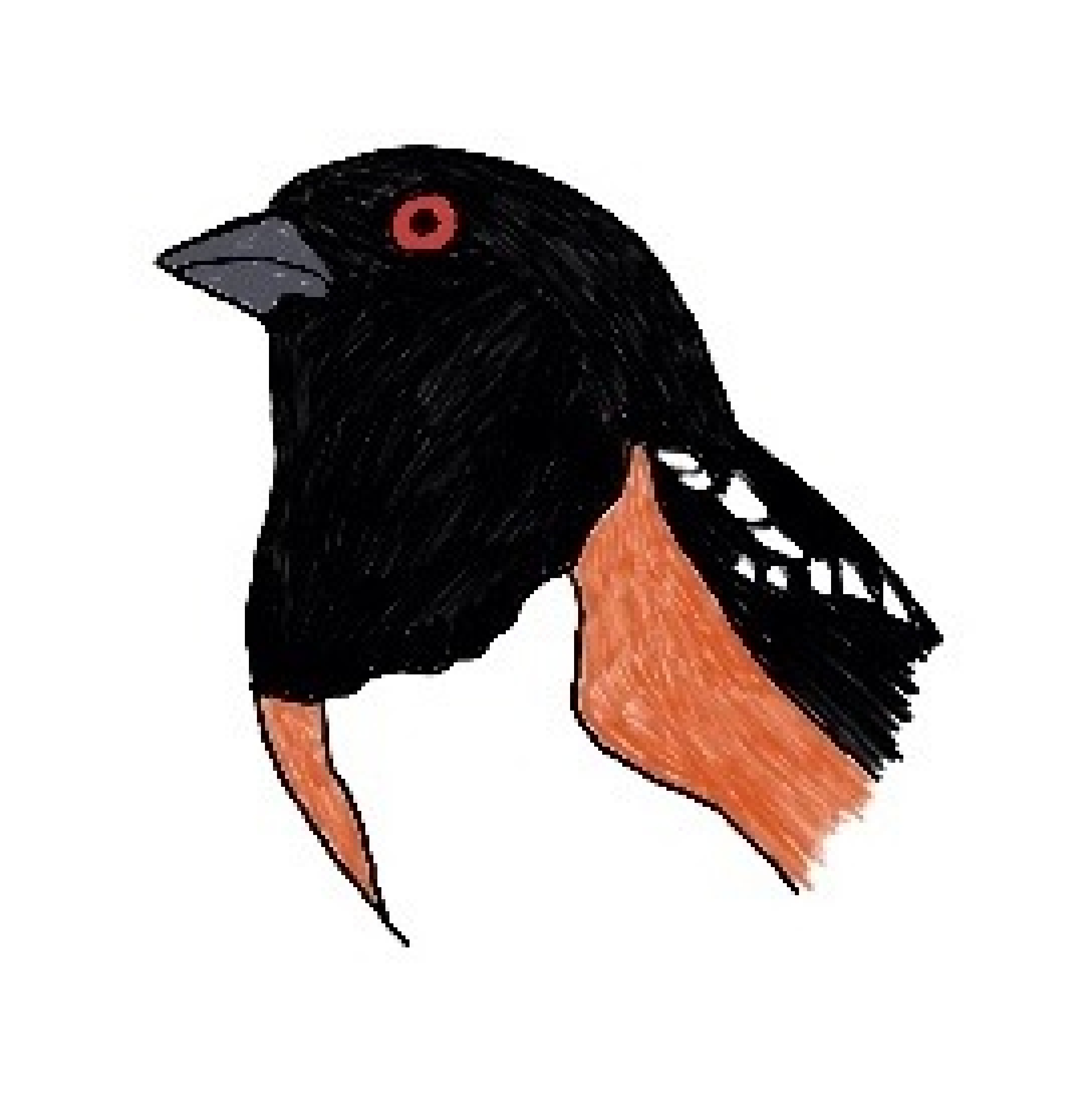 Spotted Towhee Spotted Towhee |
Habitat: return to top
American Robins can be found in a wide variety of habitats, generally containing a mixture of open areas and trees. These can include woodlands and orchards, as well as urban areas such as lawns, parks, and fields. In winter when insects are typically scarce, they are more likely to be found in areas with an abundance of trees and shrubs that produce berries.
Nesting: return to top
- Nest Type: open cup
- Nest Location: nest placed on level surface, including horizontal branches in trees, shrubs and vines, on buildings (gutters and light fixtures), cliffs, and even occasionally on the ground in the west; nest height generally below 20 ft, but sometimes in the tops of tall trees
- Clutch: 4 eggs (range of 3-7)
- Incubation Period: 12-14 days
- Nestling Period: 13-16 days
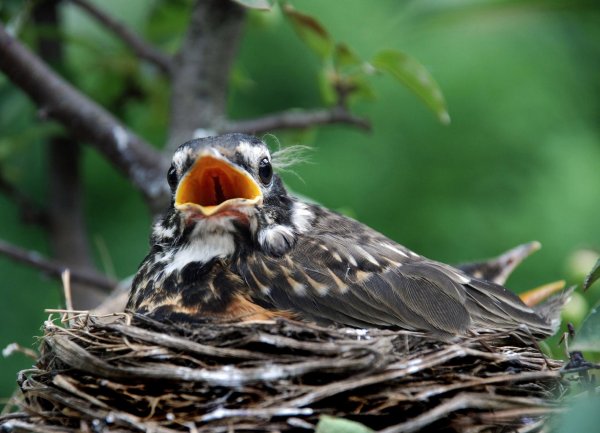
Diet: return to top
American Robins eat both invertebrates and fruit, but change the amounts of each seasonally. In spring and summer, robins rely more heavily on insects, earthworms, and snails. In fall and winter, they switch more heavily to fruits and berries. It has even been suggested they will seek out fruit containing bugs for a healthier diet.
Notes: return to top
Early settlers to North America missed their native European Robin from the old country, and so named this species "robin" after them, although they don't look much like each other, and are not even closely related.
Robins are common features of Native American folklore, with them being symbols of peace and safety, but also of fire. In several legends, robins got their red breast after being burned by fire.
The American Robin is the state bird of Connecticut, Michigan, and Wisconsin.
References to American Robins can often be found in poetry, children's stories, and even popular music. "Rockin' Robin" was a hit for Bobby Day in 1958, and also for Michael Jackson in 1972. Way back in 1926, Harry Woods wrote "When the Red-Red Robin (Comes Bob, Bob, Bobbin' Along)", which was hit at the time for Al Jolson. The song has also been recorded by Doris Day in 1953, Bing Crosby (1956), Julie London (1957), Eydie Gorme (1958), Dean Martin (1973), and Steve Goodman (1996).
Robins are legendary for finding earthworms in yards. Have you ever wondered how they do it? It appears to be a combination of keen hearing and incredible eyesight. They can actually observe subtle differences in the soil that indicate where the earthworms might be. Also, studies have shown that they can find worms entirely by sound, by listening for their digging and moving through the soil.
